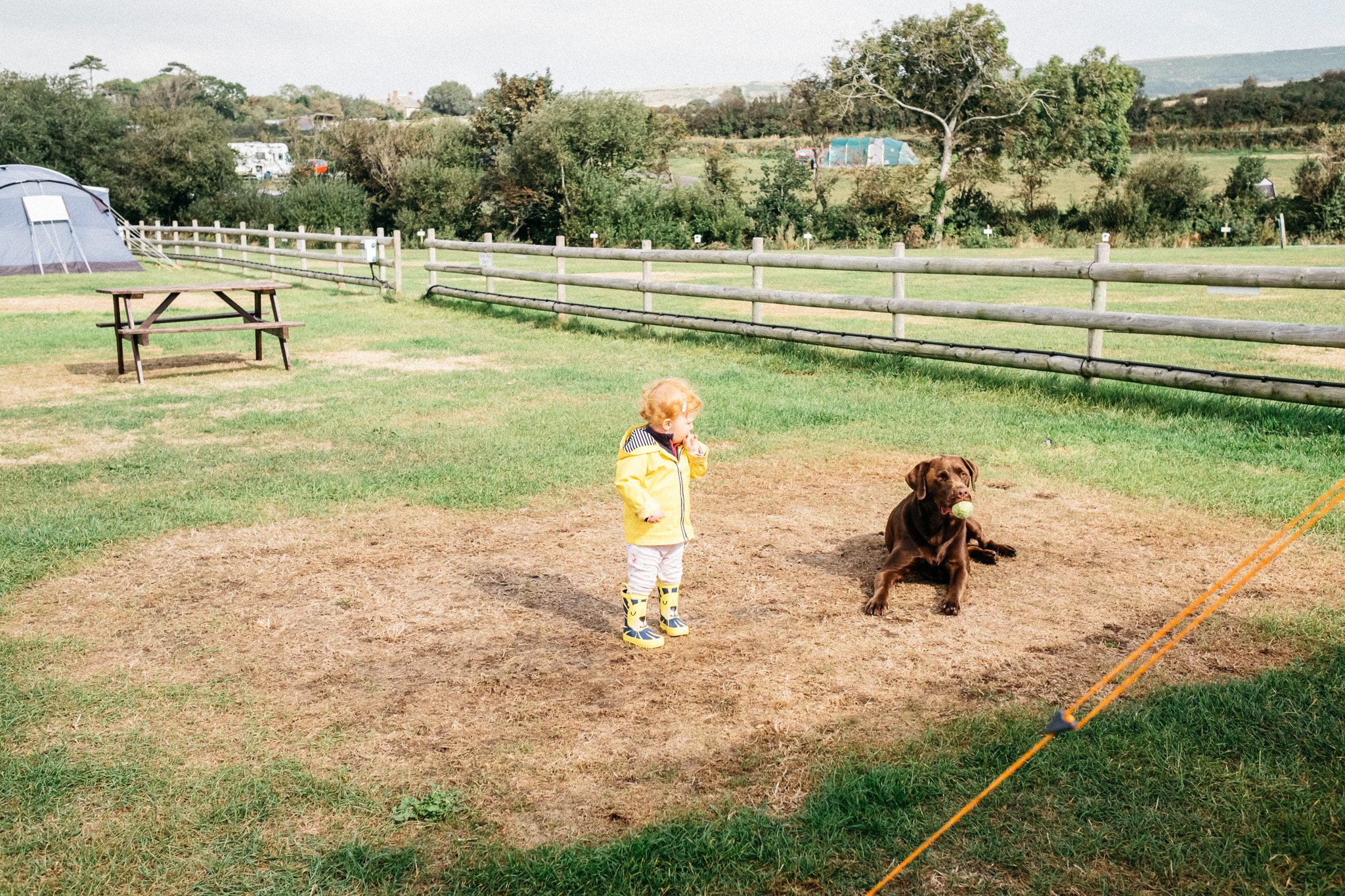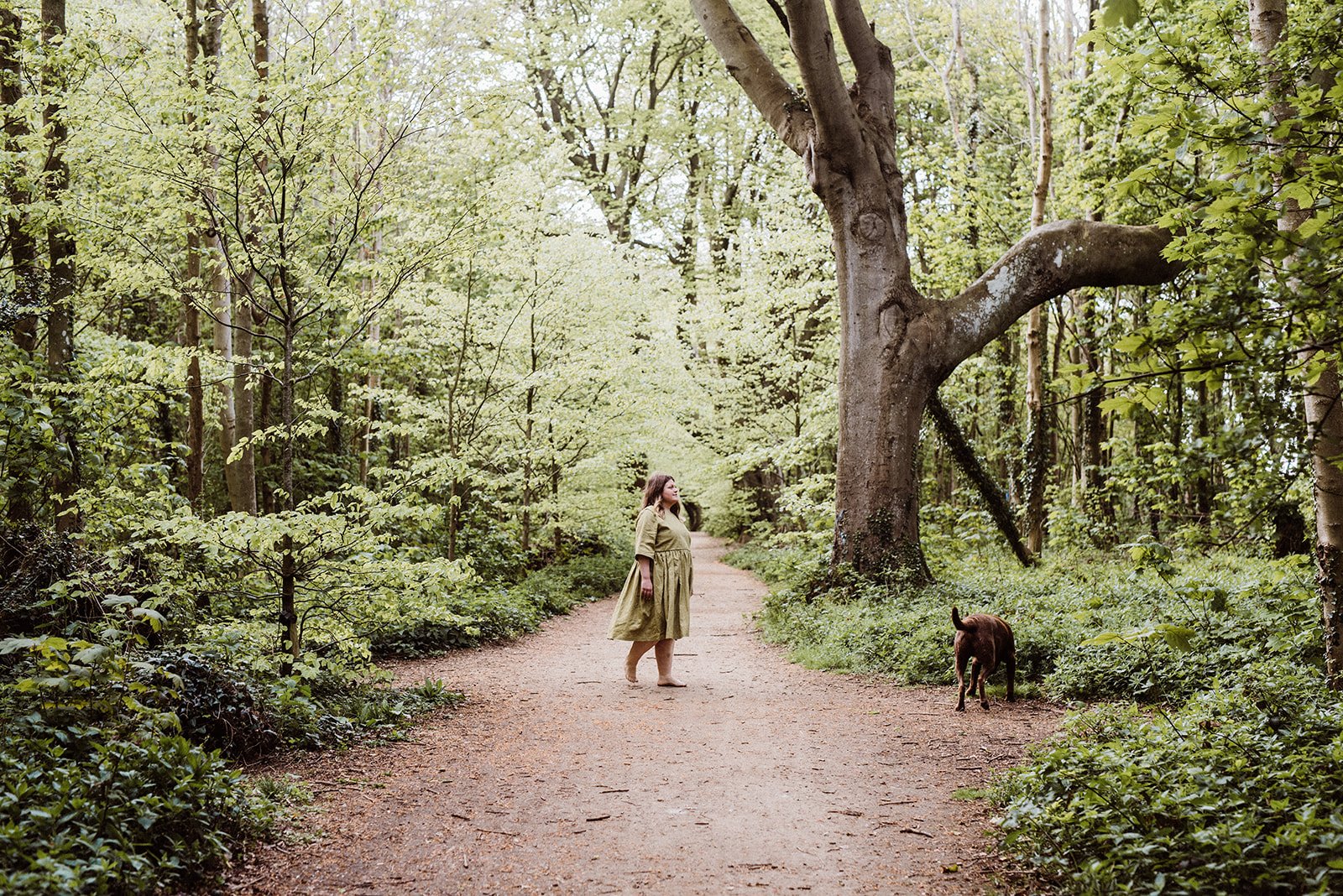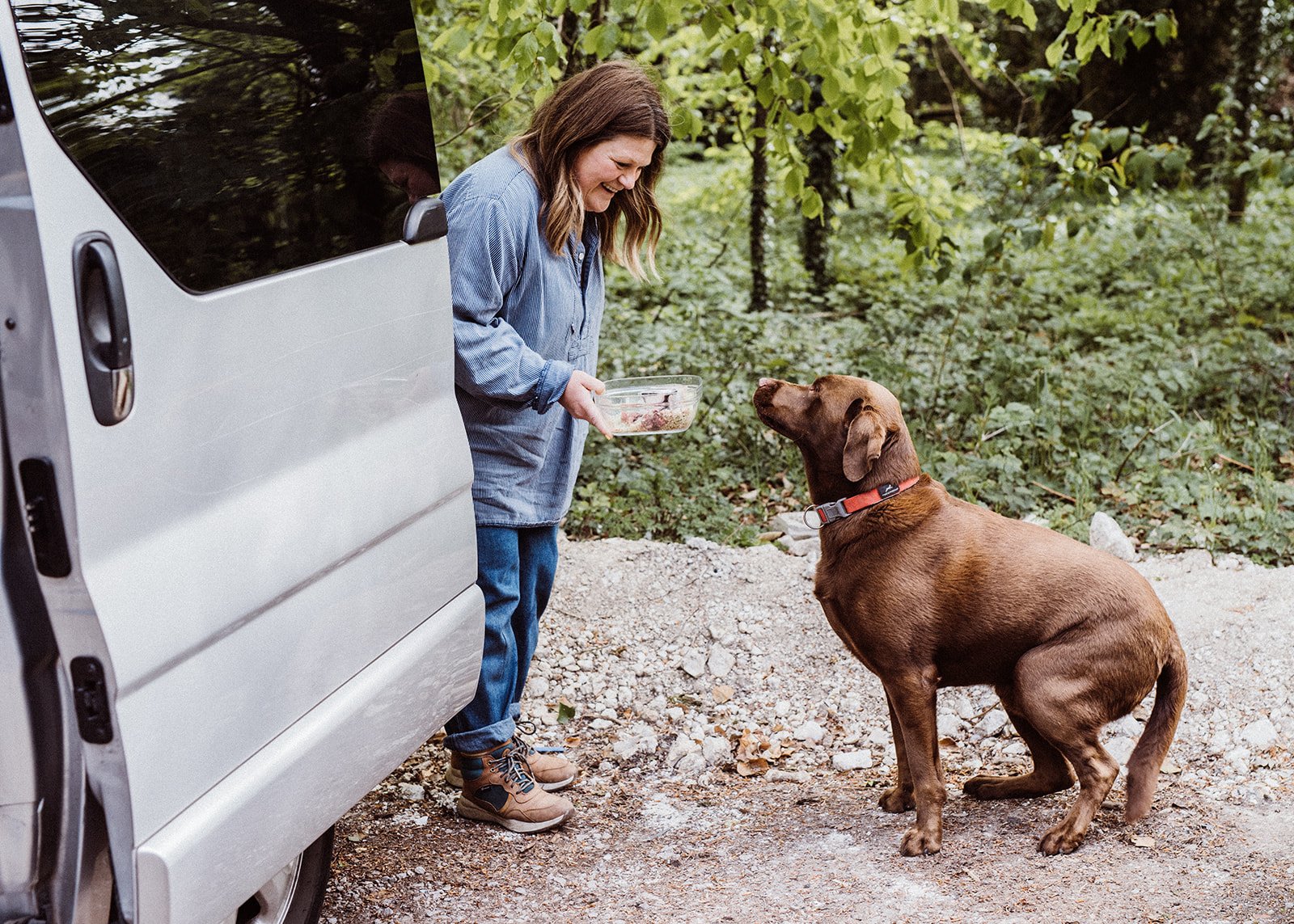Van Life: Travelling with a Dog.
At the end of a day exploring together pulling out the bed and settling in for a cosy sleep with Monty is one of the best parts of the day. He not only protects me by keeping an ear out for folks coming too close to the van, he also provides a weight to the bed that is comforting. As a solo traveller, having Monty provides companionship, protection and he makes me laugh every single day.
Of course, travelling with a dog comes with considerations - there’s the nights he won’t settle and it makes for a broken sleep, there are the times he wants to get out for the toilet at 3am, there’s storing his raw food, there’s the consideration of hot days and how best to manage that. Monty is a large dog and can’t just sit on my lap in cafes or hauled up to travel up escalators. But with some ahead planning and consideration we make it work and I wouldn't change him for the world.
If you are a van owner and considering getting a dog I would make a list of the considerations and compromises you have to make: I travel in a different way with Monty than I would if I didn't have it and he’s worth the change on lifestyle because he enables so much more. For instance: I rarely stop in towns and spend hours in the shops but that saves me money and makes me concentrate more on experiences than material things. And having a companion on a walk who barks at men who come just a little too close is a real benefit, increasing my confidence.
Travelling in the van.
To get your dog used to hanging out in the van it’s a good idea to get your dog accustomed before you head off and spend multiple nights in it, for dog may find this stressful without having no intro. It’s a good idea to tag a cuppa drinking session on the end of your normal local walk, increasing the time and cuddling up with your dog on the bed while reading a book post walk so they snooze and learnt that the van is a place for relaxing and chilling out.
When the van is moving, there are some safety considerations for your dog - where will your dog sit and will they keep still? I’m lucky that Monty just snoozes when the van is moving and keeps still. The UK advice is that you must have your dog tethered when they are in the front seat so you can buy a seat belt harness or a little adapter to clip into the seat belt lock and then onto their normal lead. Check out more about the law here.
It’s important to factor in breaks while travelling with your dog - aim for at leats every few hours for a stretch of legs and toilet break.
This might be an obvious one but pay attention to the music you’re playing, Monty is very sensitive to some music and it can make him anxious. Keep the volume bearable for your dog and avoid stressful bleeps and breaks.
Where to travel.
Currently I’ve only travelled around the UK with Monty but I know from watching other van folks travels that there are restrictions on taking dogs with you to other countries. It’s absolutely essential you pre plan what borders you are going to cross and find out what their requirements are as most will want certain vaccinations to have taken place within a certain amount of days and some have other requirements like specific working treatments. Check for current requirements here.
In the UK, I tend to do most of my van travel in spring and autumn - my busy work time is summer and I often need to be going back and forth to London but also I prefer places to be quieter and a lot of beaches have dog restrictions between May and September.
Whatever time of year you’re heading off make sure you check the place you’re hoping to head to - find out what beaches or places are going to be dog friendly and have those considerations on your itinerary. If your dog, like mine, doesn't enjoy being on a lead double check there is off lead walks you can both enjoy. Information about dog friendly places can be found in abundance on web searches so utilise it and get pre planning for your pooch.
An important consideration too is shade - will there be area you can walk where there is water to paddle in in hot weather as well as some respite from the heat? Always make sure your dog won’t be subjected to full sun for hours - places like the moors in Dartmoor might not be a good choice for a dog in sweltering weather and opt for the gorges instead where this is tree cover providing full shade and water to dip in and out of - it’s nicer for you too.
Where to stay.
If, like me, you do a mix of campsite and park up travelling always, always check what the policy is on dogs at a campsite, Check the reviews and see what people say about their experience of taking a dog to this campsite - it will tell you a lot. Some campsites might say they are dog friendly but then want you to keep the dog on a short lead at all times - not fun for you or the dog. If a campsite is dog friendly but has farm animals or chickens invest in a horse lunge rope that you can tie to a secure place in your van or screw into the grass with a twisty thing to save any potential disasters. The same goes for campsites where there is possibility of deer being around - you might have the best dog in the world but the sight of a deer might cause your dog to run out in a road and no one wants that! Also, make sure children staying close know what to do with your dog - do they need to check you are around before they approach your dog?
AirBNB have a great selection of cabins and has that are dog friendly and break your trip up nicely, just apply the filter and search away!
Managing shopping/supplies.
I’m going to start this section with a big old waggy finger - never ever leave your dog in a vehicle on any day that could be considered warm or hot. Also, never subject a dog to walking on hot tarmac on hot days, check how your own bare feet feel on the pavement and then make a decisions whether it’s fair to ask your dog to walk on it. If it’s a hot day it’s not a wandering around a town day, full stop. Schedule it in for a day when the weather isn’t so unsuitable.
On other days when it’s cool and cloudy (a cloudy day doesn't equate to a suitable day to leave your dog in a vehicle - it can still be hot and humid) and as a last resort you really need to leave your dog in the van to do a co-op dash move them to the back and make sure the ceiling vent is cracked as well as the front windows - fitting deflectors mean it’s hard to see the your windows are cracked. Use a good steering wheel lock as a lot of cases where the dog has been stolen is because the van was stolen first - deter this with this police standard lock.
A good way to check what heat is like when your vehicle is stationary is to crack open the windows as above then sit in the back of your vehicle for a few minutes, if you feel uncomfortable that your dog is definitely going to feel it. Abandon ship and move to plan B.
Use local shops to your advantage - a lot of farm shops and local produce shops are dog friendly. Make a list of what you need and research a local village or town shop and do your shopping there. You also get the benefit of supporting the local businesses in the places you visit too. Never leave your dog tied up outside a shop - I nipped into a Post Office once only to come out and find someone trying to untie Monty, luckily he was growling at them but never again.
If you’re struggling to shop local utilise bigger supermarket click and collects - I use Sainsbury’s when I need to and their click and collect service is great. Order online and select an allocated pick up time then you can just whizz in and out to collect your shopping in the shake of a lambs tail.
A lot of smaller and coastal towns will have dog friendly shops, Monty and I love making new friends as we go round browsing the beautiful displays and him scoring a treat from the biscuit jar behind the counter but if it’s hot or too your dog is a bit like a bull in a china shop then you can consider services like Rover where you can find local people to sit your dog in their homes for a number of hours.
What to take with you.
Things I ALWAYS have in the van for Monty:
a harness for when I need to keep him under close control
a horse lunge rope for keeping him tethered to the van but giving him a bit of freedom
two microfibre towels to mop down but that dry easily making sure there’s no fusty wet dog smells
two microfibre blankets to use on rotation to make sure mud and sand doesn't reach your bedding
a dog first aid kit: antihistamines (human ones are fine but make sure you work out the correct dose for your dog), germolene for cuts, bandage, eye drops, ear drops
collapsible water bowl and bottle for longer walks (those little click shut ones don’t hit the sides for Monty!)
Microchip and number tag to alert someone who finds your dog what they need to do to locate their owner
Hozelock shower for muddy paws (in Monty’s case, muddy whole body)
Tick hook - always check your dog for ticks after a walk!
food… onto that….
Feeding.
Monty has a raw diet so I really have to think about this before leaving Brighton. I have an Alpicool fridge/freezer box in my van and it will keep his minced meat and bones frozen for around 4 days with the benefit of not freezing anything that wasn’t frozen in the first place (oat milk, yoghurt etc) therefore I always set off with around 5 days worth of food that has come out the home freezer. I then have to make sure there is a raw dog food place in my iteniery to stock up around the 4/5 day mark. Luckily raw food is getting much more popular so places are popping up all over the place - you can sometimes find in farm shops and even if not detailed on their website it’s worth ringing as they might keep some in stock. If raw isn’t a consideration for you you have more options with retails parks dotted around most larger towns that usually have a Pets at Home or Pets Corner. Of course most towns will have their own local pet shop and it’s always best to support these where possible.
Other considerations.
More places are dog friendly than you might think - check steam trains, National Trusts and other points of interest for fun things you can do with your doggo!
I spoke with someone who does coast watch and he told me that the sheer number of dog deaths from falling off the edge of a cliff is staggering. Always keep your dog on a lead near a cliff edge and never take a ball if your dog is the kind of dog that sees nothing but the ball when it drops.
Resources.
Doggie Approved: eco-friendly dog product directory.
Google Maps: find a pet shop near you.
Dog Friendly - a searchable site that shows you dog friendly places to stay, eat and do by location.















